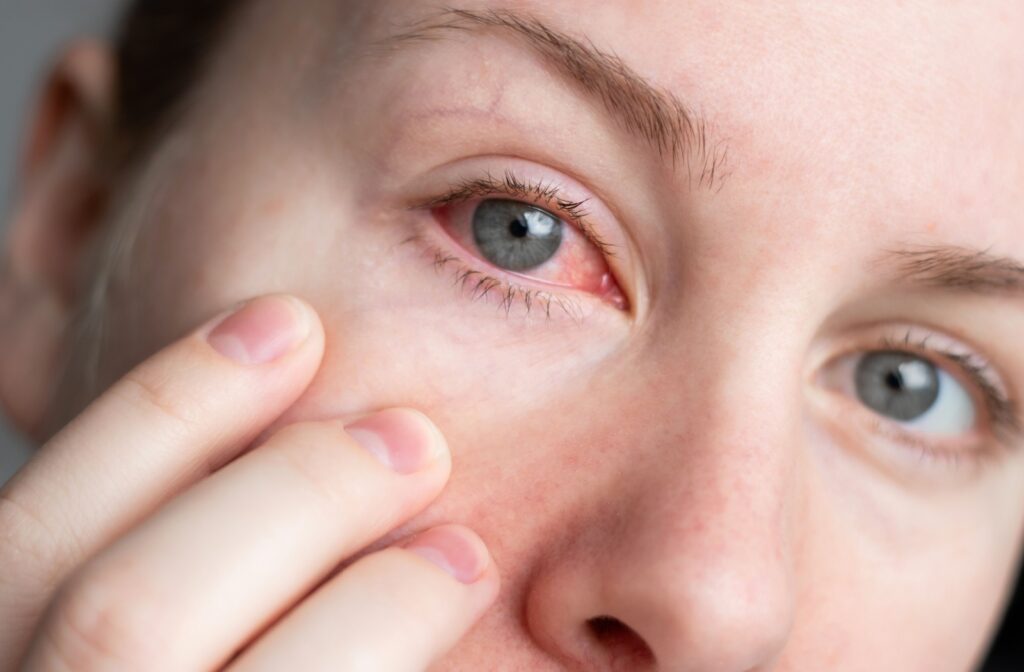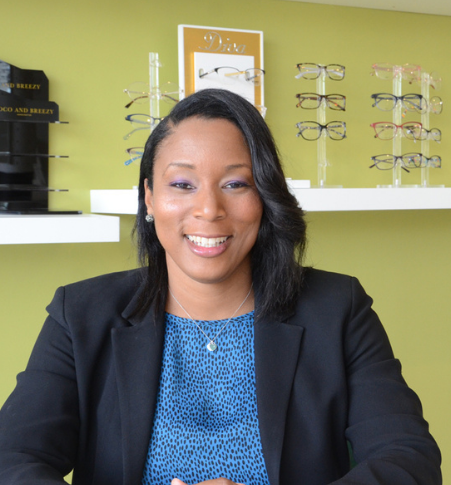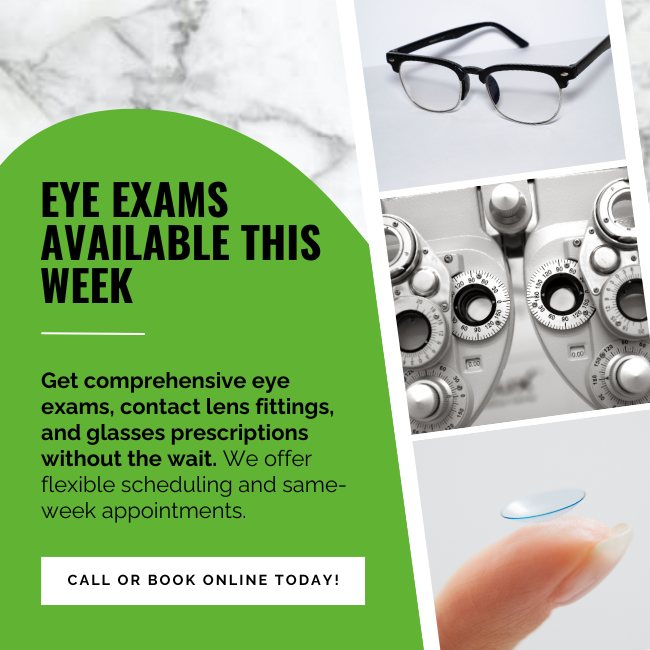That gritty, scratchy feeling in your eyes can be more than just a minor annoyance. If you find yourself reaching for eye drops or blinking constantly, you may be experiencing dry eye.
The duration of dry eye depends on its cause, as it can be a temporary or a long-term condition that requires consistent management with help from an optometrist. For some, a simple change in environment will help, while for others, a dedicated care plan is needed. River City Vision Center can help you find the source of the problem and can help determine possible treatments.
Kinds of Dry Eye and Common Causes
Dry eye can be a short-term issue or a persistent condition. One way to tell them apart is by knowing what causes symptoms and paying attention to how long they stick around. The factors contributing to dry eye symptoms often fall into a few main categories related to your health, environment, and daily life. Pinpointing these factors can help you find a path to more comfortable vision.
Temporary Dry Eye
Sometimes, dry eye symptoms appear because of your surroundings or activities. This type of dry eye often goes away once you change your environment or habits. Temporary dry eye can be caused by factors like being in the wind, near smoke, or spending a long time in a place with dry air. Activities that demand a lot of visual focus, like reading or the use of screens, can also be a cause because people tend to blink less.
Long-Term Dry Eye
Chronic dry eye happens when your eyes consistently don’t produce enough tears or the right quality of tears. This is a common eye condition that typically doesn’t go away on its own. It often needs a plan developed with an optometrist to manage symptoms effectively.
Age and Overall Health
As you get older, tear production can naturally decrease. Certain health conditions and medications can also reduce tear production, which contributes to dry eye symptoms. Your optometrist can talk with you about how your health history may relate to your eye comfort.
Symptoms Associated with Dry Eye
Dry eye feels different for everyone, but there are several common signs. You might experience one or many of these at the same time. It’s important to listen to what your eyes are telling you.
- A stinging, burning, or scratchy feeling
- Sensitivity to light
- Eye redness
- Feeling like something is in your eyes
- Difficulty with nighttime driving
- Watery eyes
- Blurred vision or tired eyes
- Headaches
How an Optometrist Diagnoses Dry Eye
If you have persistent symptoms, a visit to an optometrist is a good idea. They will work to determine the reason for your discomfort through an eye exam.
Your Eye Health Evaluation
An optometrist will talk with you about your symptoms, general health, medications, and environmental factors. They will also examine your eyes and eyelids to look for external signs of dryness. This conversation, along with a series of evaluations, helps create a complete picture of your eye health.
Measure Tear Quantity and Quality
An optometrist has specific tools to measure the volume and quality of your tears. These tests help figure out if your glands produce enough tears. They also check if those tears have the right balance of water, oil, and mucus to keep your eyes properly lubricated.
Your Options for Dry Eye Relief
Treatment for dry eye ranges from simple home remedies to professional care from an optometrist. The right approach depends on the cause and severity of your symptoms. Finding what works for you can make a difference in your day-to-day comfort.
At-Home Care and Lifestyle Changes
You can often find quick relief with a few simple adjustments to your routine. These small changes can make a noticeable difference for mild, temporary dry eye.
- Using over-the-counter artificial tears
- Blinking regularly, especially when using screens
- Increasing the humidity in the air at home or work
- Protecting your eyes from the wind

Treatments from an Optometrist
If at-home care isn’t enough, an optometrist can offer other options. After an exam, they may recommend personalized treatment plans to provide more effective relief. These approaches are designed to help address the underlying cause of your dry eye. They can include:
- Prescription eye drops to help increase tear production
- Specialized contact lenses designed for dry eye
- In-office procedures to help oil glands work better
Book an Appointment
At River City Vision Center, we are here to help you find comfort and clarity. With the right information and support, finding a solution to your symptoms is possible. Our team is ready to listen to your concerns and develop a personalized plan for your eye health. Schedule an appointment with an optometrist today to get started.





